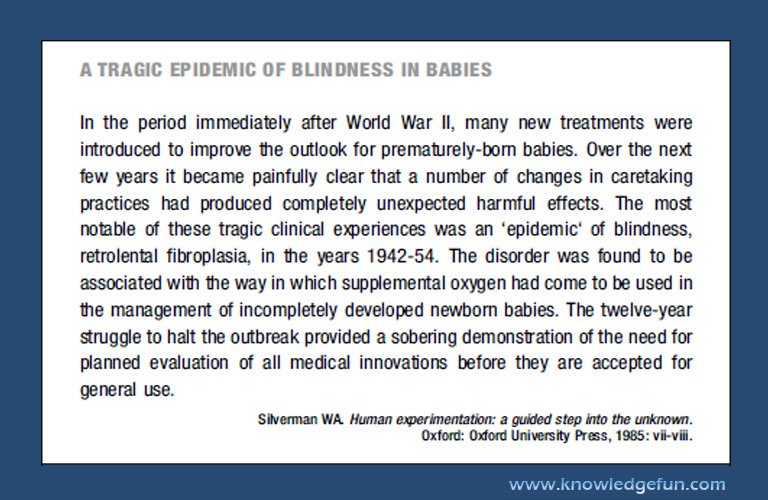Chapter I
UNEXPECTED BAD EFFECTS
At one time, doctors were clearly uncertain whether pregnant women with previous miscarriages and stillbirths could be helped by a synthetic (non-natural) oestrogen called diethylstilboestrol (DES). Some of them prescribed it and some did not. DES became popular in the early 1950s and was thought to improve a malfunction of the placenta that was believed to cause these problems. Those who used it were encouraged by reports of women with previous miscarriages and stillbirths who had had a surviving child after DES treatment.
For example, one British obstetrician, consulted by a woman who had had two stillborn babies, prescribed the drug from early pregnancy onwards. The pregnancy ended with the birth of a liveborn baby. Reasoning that the woman’s ‘natural’ capacity for successful childbearing may have improved over this time, the obstetrician withheld DES during the woman’s fourth pregnancy; the baby died in the womb from ‘placental insufficiency’. So, during the woman’s fifth and sixth pregnancies, the obstetrician and the woman were in no doubt that DES should again be given, and the pregnancies both ended with liveborn babies. Both the obstetrician and the woman concluded that DES was a useful drug. Unfortunately, this conclusion was never substantiated in the unbiased studies that were actually being conducted and reported during the years over which the woman was receiving care.
Even worse, almost 20 years later, the mother of a young woman with a rare tumour of the vagina suggested that her daughter’s cancer might be due to the DES she had been prescribed during her pregnancy. Since then, numerous studies have shown a range of serious side-effects of DES in both men and women who, as fetuses, had been exposed to the hormone while in the womb, including not only an increased frequency of rare cancers but also abnormalities of the reproductive system.
By the time it was officially declared that DES should not be used in pregnancy, several million men and women had been exposed to the drug. Knowing what we know now, if doctors had known how to distinguish the most reliable research on DES available in the 1950s, many fewer would have prescribed it. What is more, DES was never actually proved to be effective for the condition for which it had been prescribed in the first place. Tragically, this lack of evidence of benefit was widely overlooked.
Another chilling example of a medical treatment that did more harm than good is thalidomide. This sleeping pill was introduced in the late 1950s as a safer alternative to the barbiturates that were regularly prescribed at that time; unlike barbiturates, overdoses of thalidomide did not lead to coma. Thalidomide was especially recommended for pregnant women, in whom it was also used to relieve morning sickness.
Then, at the beginning of the 1960s, obstetricians began to see cases of severely malformed arms and legs in newborn babies. This previously rare condition results in such extremely shortened limbs that the hands and feet seem to arise directly from the body. Doctors in Germany and Australia linked these infant malformations with the fact that the mothers had taken thalidomide in early pregnancy. And one of the German mothers of an affected baby had a crucial role in this discovery – she reported that she had experienced tingling and weakness of her hands and feet when she was taking the drug, which set doctors thinking.
At the end of 1961, the manufacturer withdrew thalidomide. Many years later, after public campaigns and legal action, the victims began to receive compensation. The toll of these devastating abnormalities was immense – across the 46 or so countries where thalidomide was prescribed (in some countries even sold over the counter), thousands of babies were affected. The thalidomide tragedy stunned doctors, the pharmaceutical industry, and patients, and led to an overhaul of the process of drug development and licensing worldwide.

A TRAGIC EPIDEMIC OF BLINDNESS IN BABIES
In the period immediately after World War II, many new treatments were introduced to improve the outlook for prematurely-born babies. Over the next few years it became painfully clear that a number of changes in caretaking practices had produced completely unexpected harmful effects. The most notable of these tragic clinical experiences was an ‘epidemic‘ of blindness, retrolental fibroplasia, in the years 1942-54. The disorder was found to be associated with the way in which supplemental oxygen had come to be used in the management of incompletely developed newborn babies. The twelve-year struggle to halt the outbreak provided a sobering demonstration of the need for planned evaluation of all medical innovations before they are accepted for general use.
Silverman WA. Human experimentation: a guided step into the unknown.
Oxford: Oxford University Press, 1985: vii-viii.





